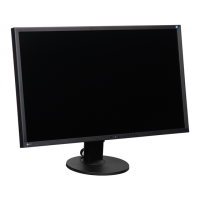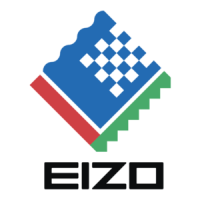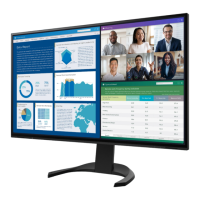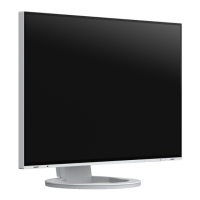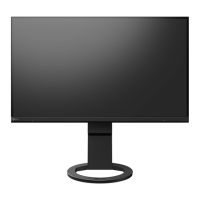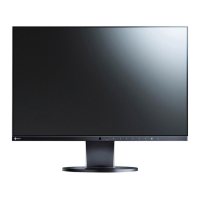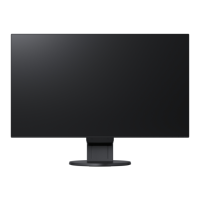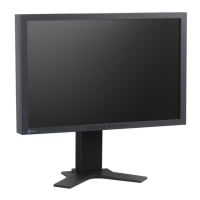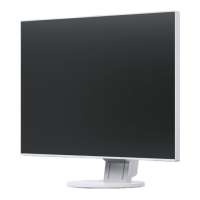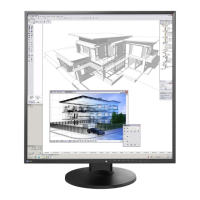6-3. Other Problems
Problem Possible cause and remedy
1. The Setting menu does not
appear.
• Check whether the switch operation lock function is active (see “Key
Lock” (page 35)).
2. Cannot select items in the Setting
menu.
• Items that are displayed with gray text cannot be changed.
3. No audio output. • Check whether volume is set to 0.
• Check the PC and audio playback software to see whether they are
congured correctly.
• When using PbyP display, check the settings for “Sound Selection
(PbyP)” (see “Sound Selection (PbyP)” (page 24)).
4. USB devices connected to the
monitor do not work / the docking
station function cannot be used.
• Check whether the USB cable is correctly connected between the
PC and the monitor.
• When two or three PCs are connected to one monitor, check
whether the correct USB upstream port is enabled (see “4-3. Linking
the Input Signal and USB Port” (page 31)).
• Check whether the USB cable is correctly connected between the
peripheral and the monitor.
• Try using a dierent USB port on the monitor.
• Try using a dierent USB port on the PC.
• Reboot the PC.
• When “Compatibility Mode” is set to “O” in the “Administrator
Settings” menu and the power of the monitor is turned o, devices
connected to the USB downstream port are not operational. Change
the setting for “Compatibility Mode” to “On” (see “Compatibility
Mode” (page 34)).
• When “USB” is set to “O” in the “Administrator Settings” menu,
peripheral devices connected to the USB port cannot be used. Set
“USB” to “On” (see “USB” (page 35)).
• In the following cases, the LAN port cannot be used.
- When “Ethernet” is set to “O” in the “Administrator Settings”
menu. Set “Ethernet” to “On” (see “Ethernet” (page 35)).
- When USB-C connection is not used.
- When the OS of the PC is not supported (see “8-2. Specications”
(page 46)).
• If the peripheral devices work correctly when they are directly
connected to the PC, contact your local EIZO representative.
• Depending on the USB host controller you are using, the connected
USB device may not be recognized properly. Update to the latest
USB driver provided by the manufacturer, or connect the monitor to
the USB 2.0 port.
• Check the PC’s BIOS setting for USB when using Windows. (See
the manual of the PC for details.)
5. Power indicator is ashing
orange and white.
• This symptom may occur when the PC is connected to the
DisplayPort connector. Use a signal cable recommended by us for
the connection. Turn the monitor o and on.
• Check the connection and condition of the USB devices connected
to the monitor.
• Turn o the main power switch on the rear side of the monitor, and
then turn it on again.
6. Even when the mouse or
keyboard are used, the computer
does not return from sleep.
• Turn the setting “On” for “Compatibility Mode” on the “Administrator
Settings” menu (see “Compatibility Mode” (page 34)).
39
Chapter 6 Troubleshooting
